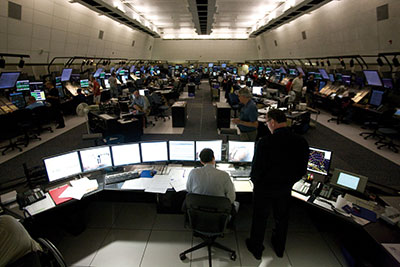
Features
Safety
Glide Path: The consequences of fatigue
The Transportation Safety Board of Canada (TSB) recently released its report on an incident termed as a “risk of collision” that occurred at Vancouver International Airport (YVR) in April of 2011.
September 6, 2013 By Paul Dixon
The Transportation Safety Board of Canada (TSB) recently released its report on an incident termed as a “risk of collision” that occurred at Vancouver International Airport (YVR) in April of 2011. An air traffic controller (ATC) had two aircraft ready to take off from the same runway while a third aircraft was on final approach to that runway. The report reads, “It is likely that the airport controller was experiencing the effects of fatigue at the time of the occurrence . . . this would have made it more difficult for the airport controller to recognize the developing situation, and to take timely corrective action . . .”
 |
|
| In the world of police, firefighters and paramedics that I inhabited, it was simply a matter of ‘suck it up.’ PHOTO: NAV CANADA |
From my first job as paper boy at the age of 12 until I “retired” a few years ago, I worked shift work of one form or another. Even when I worked a nominal day shift, I carried a pager as an on-call emergency manager. Sleep was something you looked forward to – not today or tomorrow, but maybe on your days off. We used to joke that sleep could wait until we were dead. In the world of police, firefighters and paramedics that I inhabited, it was simply a matter of “suck it up” and get through the shift. If you had a problem getting through the night, then maybe you were the problem.
Then, about 20 years ago, an awareness developed of the health implications for many people working shift work, especially short rotations that didn’t allow the body to adjust. There have been many studies looking at a variety of shifting patterns in an attempt to identify the “best.” The short answer is that there is no “best” when it comes to shift work.
The ATC for the YVR incident was in the second day shift of a four-shift block: Two day shifts, followed by two night shifts. The breakdown was as follows: Day 1 (April 12) – 06:30-15:00; Day 2 (April 14) – 05:30-14:00; Night 1 (April 14) – 22:30-06:30; Night 2 (April 15) – 22:30-06:30. And that’s not a typo if you were reading closely. The ATC worked until 14:00 on his second dayshift and came back eight and one-half hours later to start his overnight shift at 22:30. When interviewed by the TSB, he stated he had approximately six hours of sleep between getting off at 14:00 and returning to work at 22:30, followed by approximately five hours of sleep after the first night shift. The incident occurred 30 minutes after the start of the second overnight shift.
The TSB report addresses the fatigue issue by saying, “At any time when individuals are required to work during periods that are significantly in opposition to their normal circadian rhythm, fatigue and its management may become a factor. Trying to get adequate sleep when one’s body is normally in a wakened state is a challenge. Air traffic control personnel are given information on recognizing fatigue and given strategies for minimizing its effects. However, it is not always possible for individuals to determine their fatigue level. . . The TSB’s analysis of the airport controller’s sleep pattern indicated that the airport controller did not obtain sufficient sleep before the occurrence shift, which would likely have contributed to degraded performance. In addition, the airport controller’s schedule did not permit enough adaptation time, due to the requirement to sleep during the day in an attempt to be adequately rested for the night shift.”
I recently took a short-term contract that resulted in my working long days in uncomfortable surroundings with three nights in a row of no more than four hours’ sleep. In one sense it was a great experiment, as I made a point of dedicating one of my three active brain cells to simply observing my performance levels knowing that I was in a state of advanced fatigue. It is interesting to realize your short-term memory is shot (but not so funny to the person of whom you have to ask their name three times in less than five minutes) or wondering what the problem is with your cell phone when it’s the other phone that’s ringing (did that twice in an hour). Everything in that TSB report describing the condition of the ATC applied to me and in spades! I knew I was tired and I knew I could expect to make some goofy mistakes, and even at that, I was trying to answer the wrong phone. I survived the week and I will tell you that I was not in a position to have jeopardized anyone’s safety and that’s a good thing, because if I had been working as an ATC, I would not have been able to do the job.
Bottom line: sleep-deprived aviation professionals put lives in danger. It’s an issue that must be taken very seriously at all levels going forward.
Paul Dixon is freelance writer and photojournalist living in Vancouver.